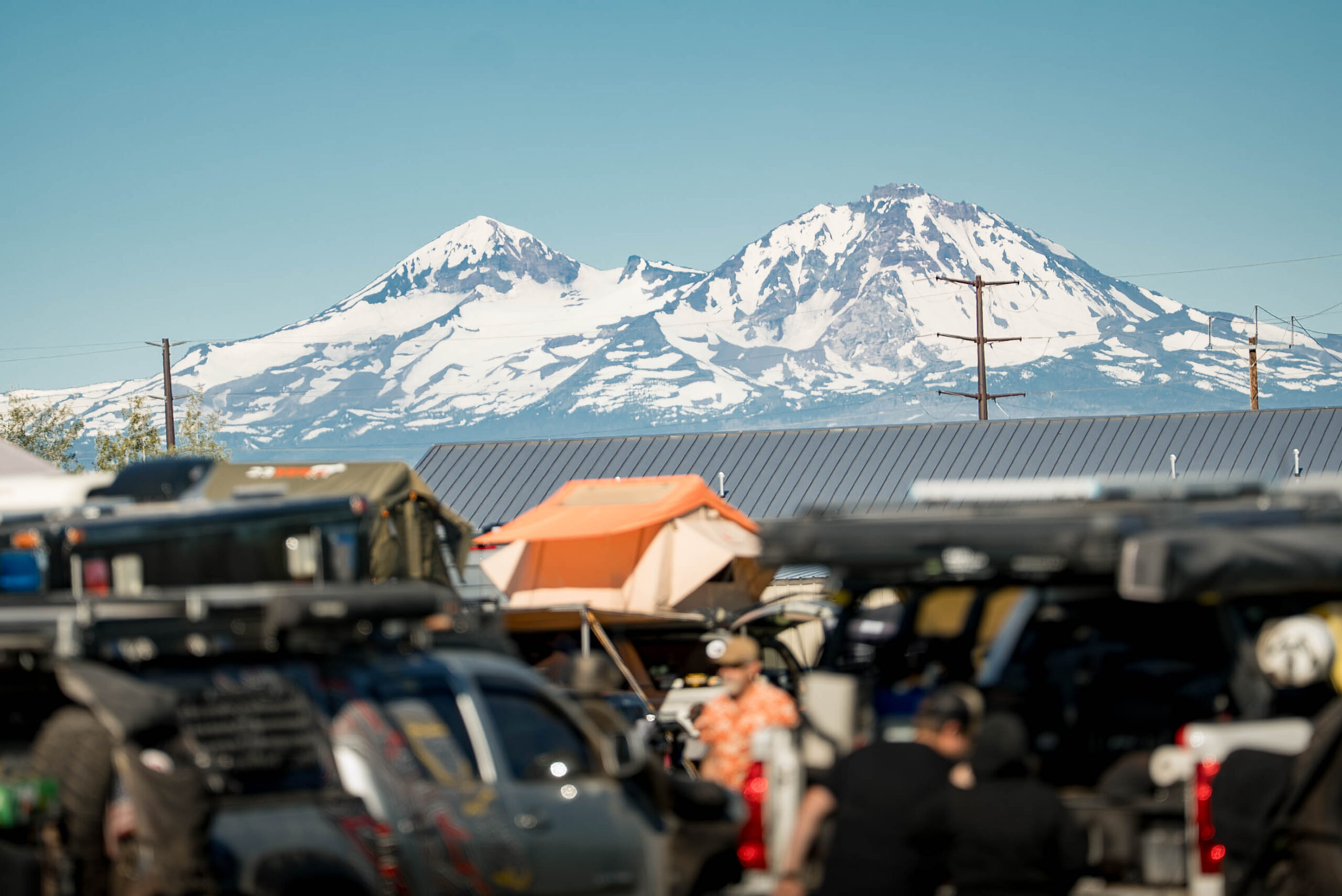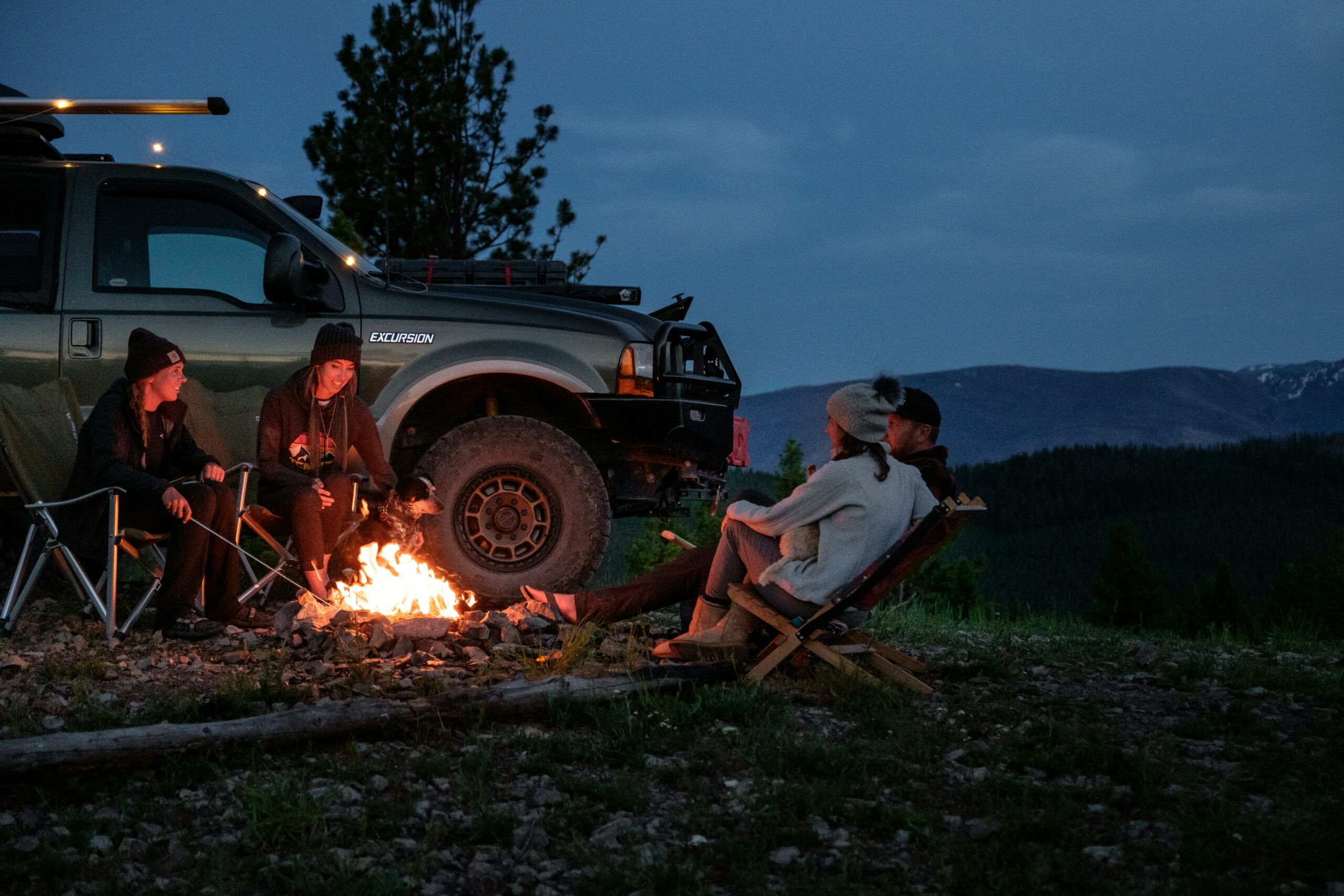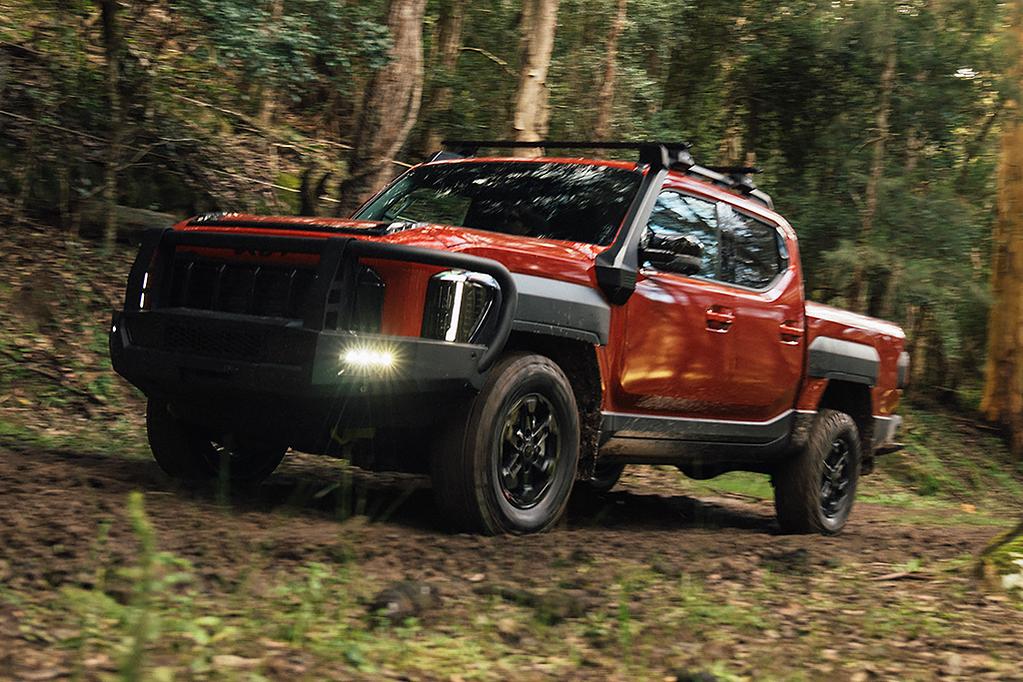Overlanding is definitely more of a buzzword than it was a few short years ago. But in the last five years, there’s a good chance that thousands of people have been introduced to the term. But what exactly does overlanding entail?
Overlanding is often misinterpreted as just car camping, four-wheeling, or #vanlife. While it can encompass those things, at its heart, overlanding is about self-sufficient vehicle travel where the adventure itself is the destination. Said vehicle could be a truck, SUV, wagon, motorcycle, bicycle, or expedition vehicle. Regardless of what you might be piloting, an overland traveler should be prepared to manage their own needs through equipment and skill.
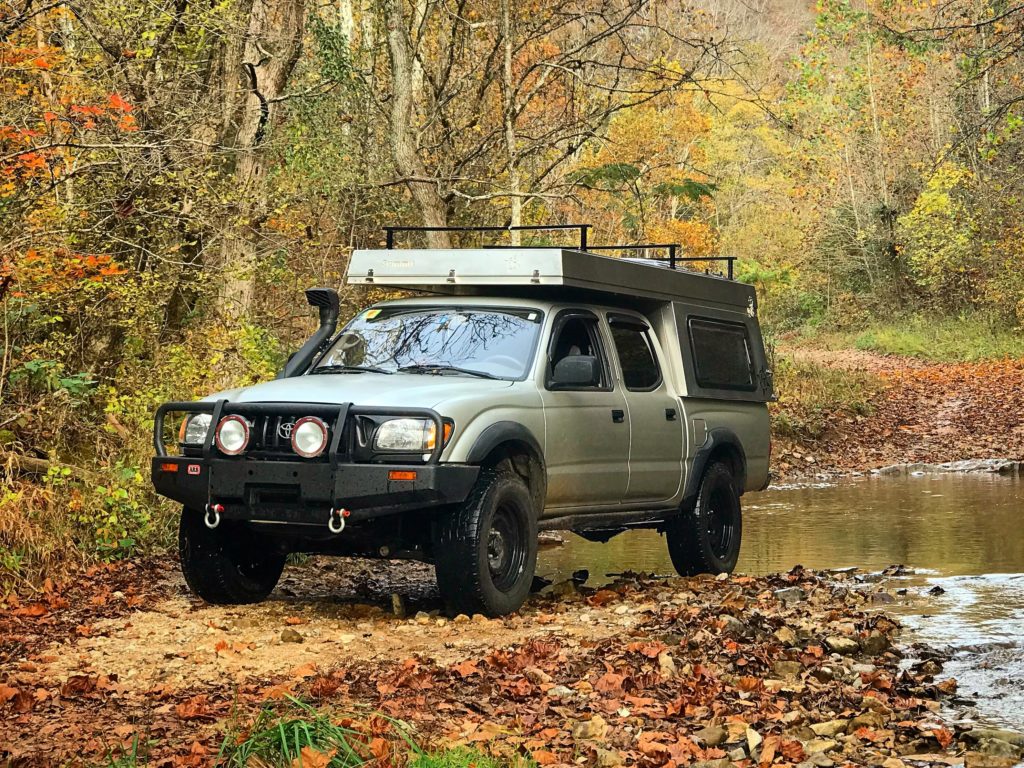
At its core, overlanding embodies the spirit of exploration. Whether you’re steering your truck down a dusty two-track in the Andes or rocketing down a dirt road in the Southwest on an adventure motorcycle, it’s about seeking out the less traveled roads and fully immersing yourself in new environments and cultures. No matter where your journey takes you, there are sure to be aspects of the day-to-day life of the locals that we can learn from. Local cuisine, music, history, and more can enrich a trip, and slowing down and taking the time to learn about these cultural aspects can truly enrich a trip. Sure, you’ll visit remote campsites and face off-road challenges, but every twist and turn along the way becomes an opportunity for personal reflection and growth.
The Origin of Overlanding
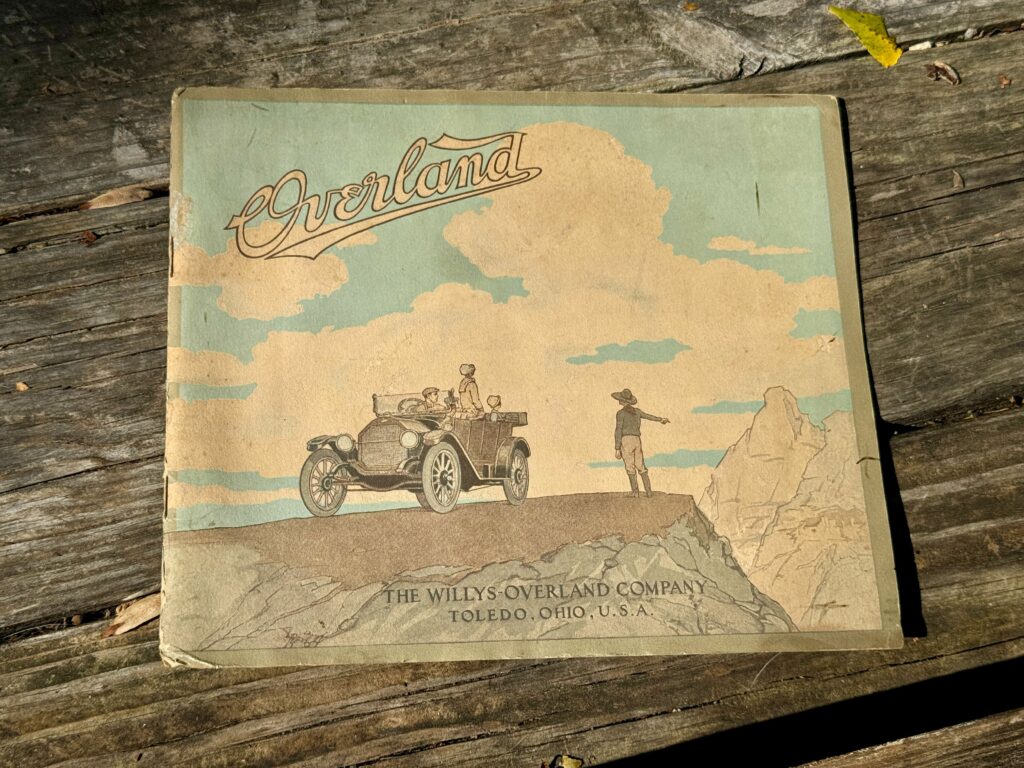
The term “overlanding” originated in Australia, referring to the long-distance movement of livestock. Pioneers like Alfred Canning and Len Beadell paved the way for modern overland travel, creating routes that still inspire adventurers today.
As motorized travel grew, early explorers embarked on incredible journeys in basic vehicles. Max Reisch’s ride from Vienna to Mumbai and Ralph Bagnold’s trek across the Libyan Desert showcased the pioneering spirit that defines overlanding.
Today, overlanding combines exploration with recreation. The rise of adventure tourism and durable vehicles, like the Toyota Land Cruiser, has made this form of travel more accessible.
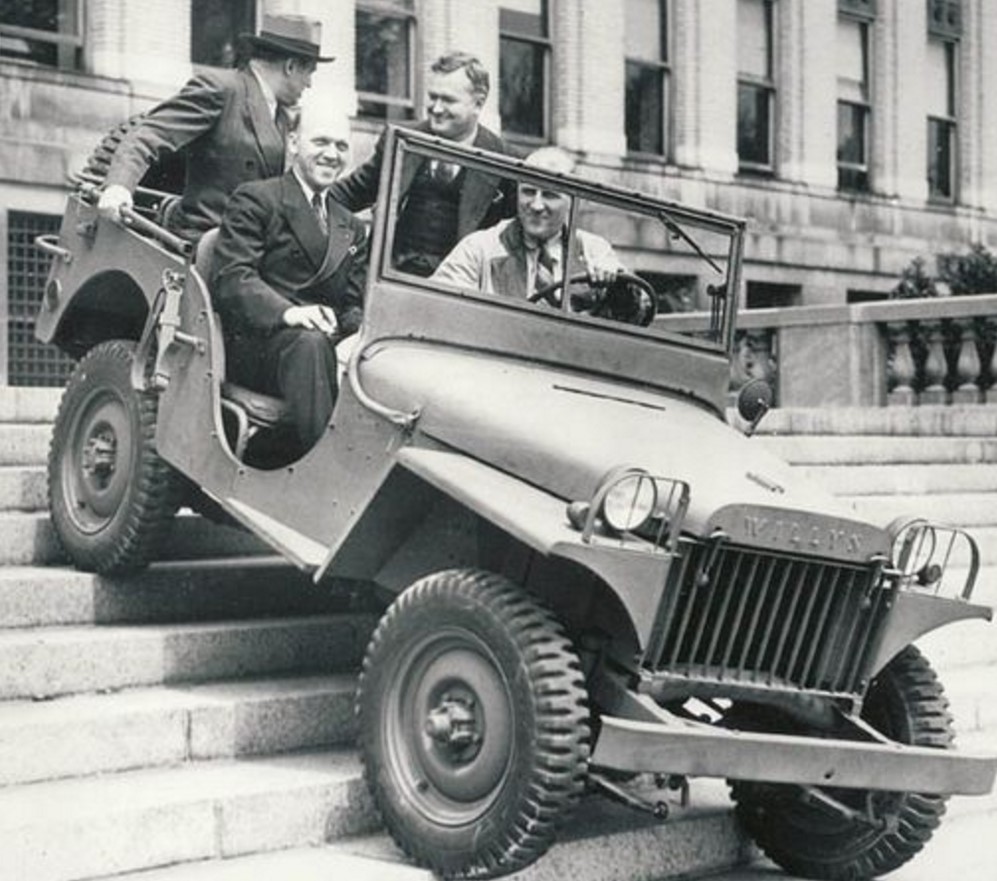
Willys-Overland staged publicity event, driving up and down the U.S. Capitol Steps in February 1941. Photo: Wikimedia Commons

A pre-Instagram 1930s Overland Honeymoon. Photo: Wikimedia Commons
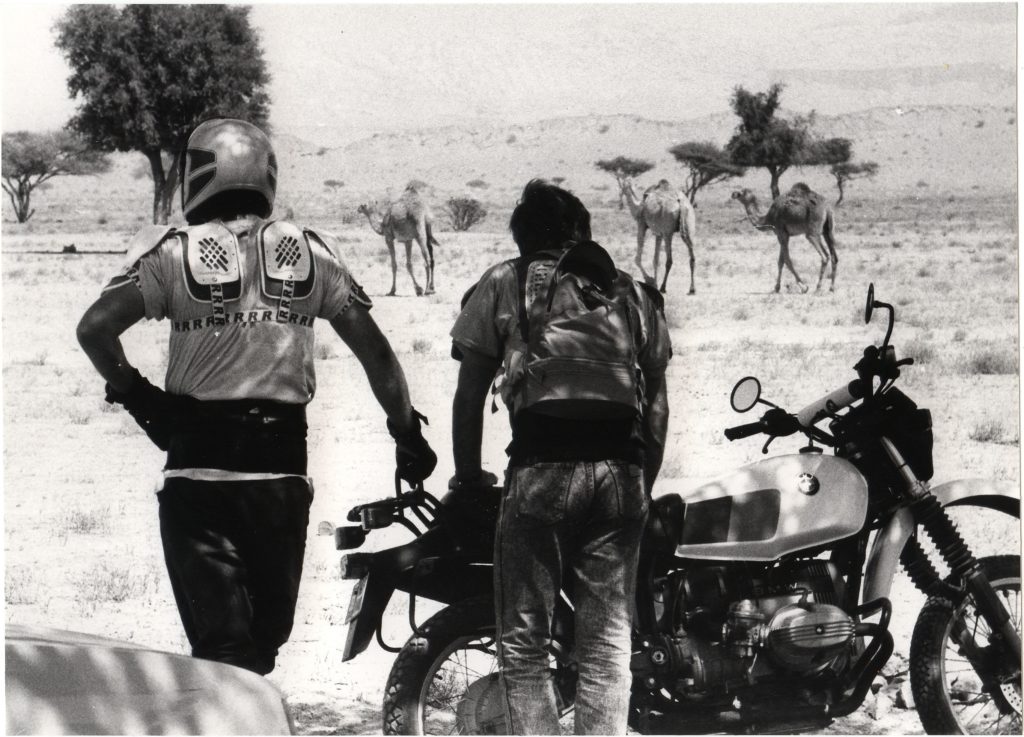
Camels and a 1981 BMW R80 G/S in Abu Dhabi. Photo: Ebling Klaus, Public domain, via Wikimedia Commons.
Your Rig is Your Key to Adventure
We’ve already said that an overland journey can take place in nearly countless vehicles, but regardless of what you choose as your trusted steed, it should be durable and capable. You can tackle the durability side of things from a couple of angles. For starters, you should choose a platform that’s known for reliability, but don’t take that as a guarantee that you can cross a continent with zero problems.
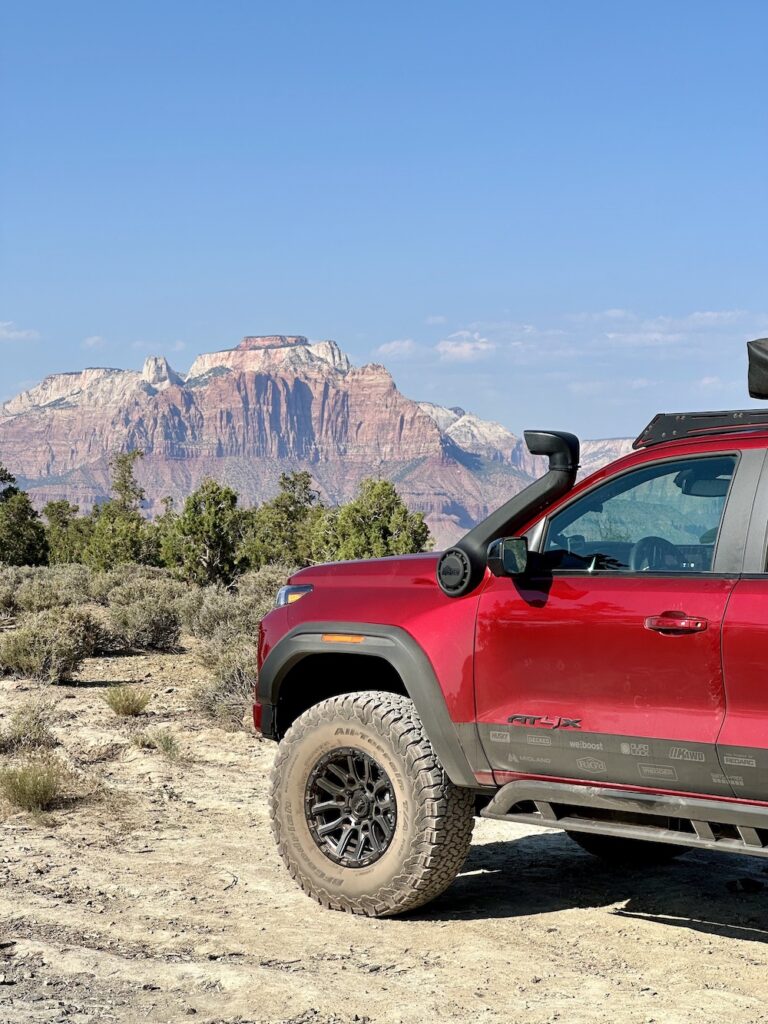
Overland vehicles are marked by their ability to withstand the rigors of the road with capabilities that stand the test of time. Whether you favor Land Rovers or motorcycles, the right vehicle is essential. The classic overland rigs, such as the Willys Jeep (the first mass-produced civilian four-wheel drive vehicle) and the BMW R 80 G/S (the motorcycle that marked the start of modern adventure riding), laid the foundation for the Wranglers and GSs of today. Now, we have a range of models to pick from many trusted vehicle manufacturers, so if you’re on the market, examine your needs, the pros, and cons of each, and maybe talk to some experienced travelers before diving into a new rig.
On the other hand, you can increase the durability and reliability of your rig by adding a few crucial upgrades. A smooth ride doesn’t just save your back; it’s a great deterrent to wear and tear on your rig and gear, so invest in quality tires and suspension upgrades. From there, you can add bumpers, skids, and other trail armor. These items come with a weight penalty, but they can keep a slight mistake from becoming a costly and possibly trip-ending error. We’ll revisit upgrades momentarily, but regardless of where you’re headed, make sure you take a vehicle that you can rely on to get you back.
Get the Gear
If you’re in the wilderness long enough you’ll need to repair a flat, swap out consumable parts, and make some repairs. You should be familiar with how to complete these tasks, have the tools that you need on hand, and carrying a few spare parts isn’t a bad idea.
This sense of self-reliance is integral to overlanding. Beyond these possible trail-side repairs, you need to be ready to take care of your basic needs in whatever level of wilderness you’re exploring. An overnighter in the National Forest might not require the same level of planning and packing as a month-long trip, but you still have to be ready to take care of yourself.
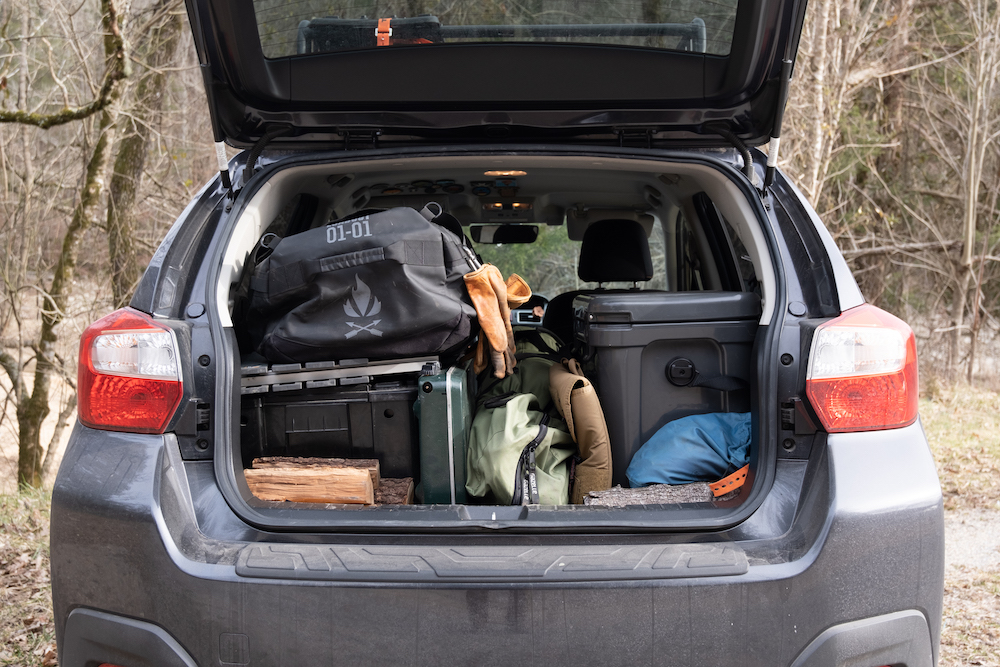
The idea of self-reliance should be what guides your gear selection. First, outfit your vehicle with what you need to meet your basic needs for food, water, and shelter, and then add the tools and equipment needed to address repairs and other emergency situations. Lastly, think of the things that will increase your comfort, but don’t go too wild. Be cognizant of your vehicle’s gross vehicle weight rating, and even if you’re under that, pay attention to how well things are organized. If all of your gear is heaped on top of everything else, it’s incredibly difficult to find what you need in a hurry. Plus, you’ll have a better experience if your loadout is curated to meet your needs versus the proverbial kitchen sink strategy.
With that in mind, these categories are a good starting point and road map for upgrading your vehicle.
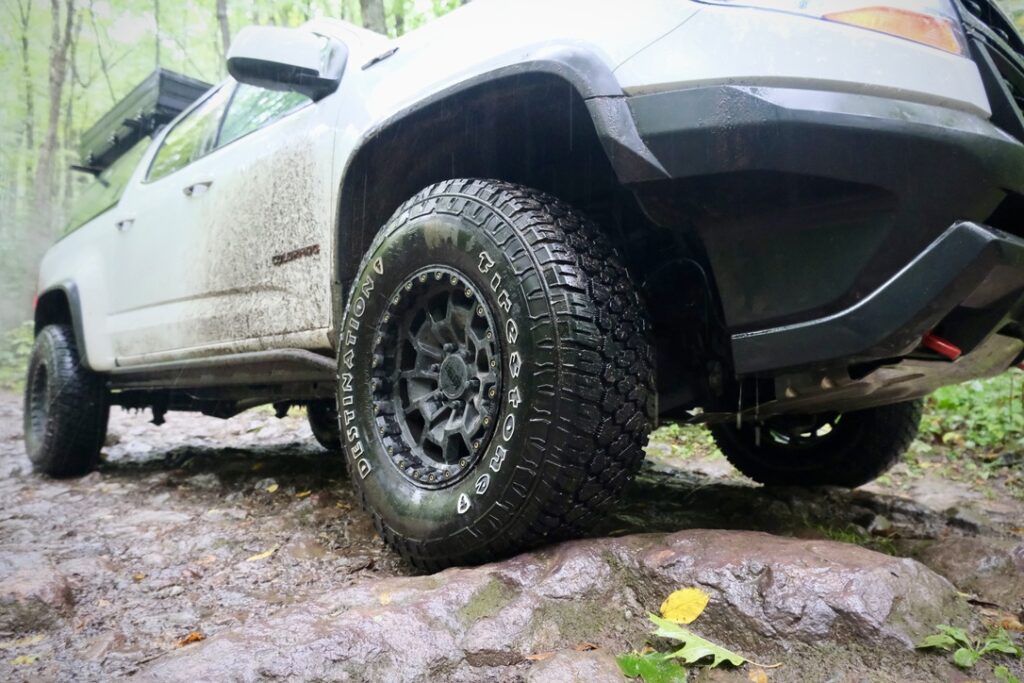
Tires, Wheels, and Suspension: The connection between your vehicle and the ground beneath you will make or break your overland journey. Investing in quality tires is one of the best and most basic things you can do to prepare any vehicle for overlanding. For more serious off-road ventures or carrying capacity, you may consider upgrading your suspension and wheels if heading deep into the hinterland happens on a regular basis.
Bumpers, Armor, and Recovery Gear: Your choice of vehicle protection should be determined by the level of challenge you choose to tackle. Or, perhaps conversely, the level of challenge should be determined by the armor on your rig. Additionally, having a basic recovery kit for getting yourself out of sticky situations is important, but arming yourself with the knowledge to use it is absolutely essential.
Navigation and Communications: Figuring out where to go is one of the best parts of overlanding, and being in touch when you need it most is crucial for safety. We’re going off the beaten path here, so having navigation and communication systems for finding your way in uncharted terrain is very useful, even if it’s as simple as an updated atlas and a knowledge of cell coverage where you’re traveling.
Lighting and Power: Illuminating your journey and generating your own power give you the ability to travel further afield and for longer periods of time. At the very least, keep a headlamp for your evening camp chores or a trip to the privy. You may also consider adding auxiliary lights, solar, or a generator for longer-term traveling.
Racks, Storage, and Trailers: Remember that overlanding is not car camping, and the goal here is extended travel. That means you’ll need to store and transport your gear for the long haul. Whether you invest in some upgraded milk crates, add a bed storage system to your truck, or go all in pulling a capable trailer, having a system to safely travel with cargo is key.
Tents and Awnings: Being out on the range truly starts to feel like home when you get a good night’s sleep and have shelter from the storm. Whether you’re tenting on the ground and stretching out a shade tarp or going full tilt with a rooftop tent and 180-degree awning, being well-rested and protected from the elements keeps you fueled for the journey ahead.
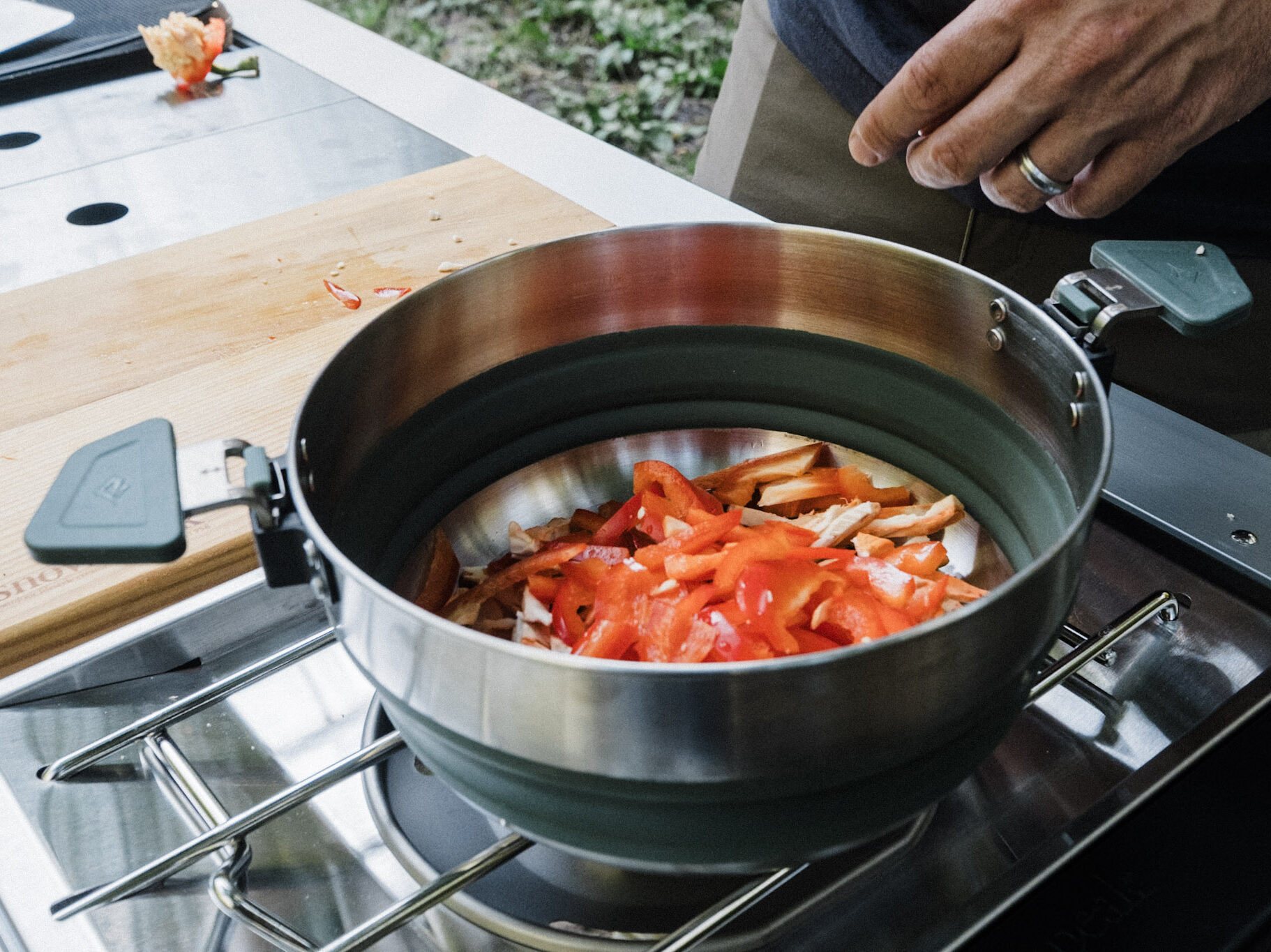
Kitchen Gear: Speaking of keeping fueled, who doesn’t love cooking and eating outdoors? Whether your camp kitchen is a Coleman stove on the tailgate or a fully-equipped slide-out system, food always tastes better when you’re dining under the stars. Also, don’t forget to factor in your water storage, as staying hydrated while overlanding requires more water than you might realize.
Experience and Knowledge Weigh Nothing
It’s incredibly easy to think that overlanding is all about the gear, but that’s not necessarily the truth. Sure, you need some things to be appropriately prepared, and some comfort items are absolutely fine, but what you should really be collecting is experience. You’ll be amazed at how much you learn about your rig and your travel experience with some time behind the wheel. From how your vehicle responds in particular situations to what you really need and what you really don’t.
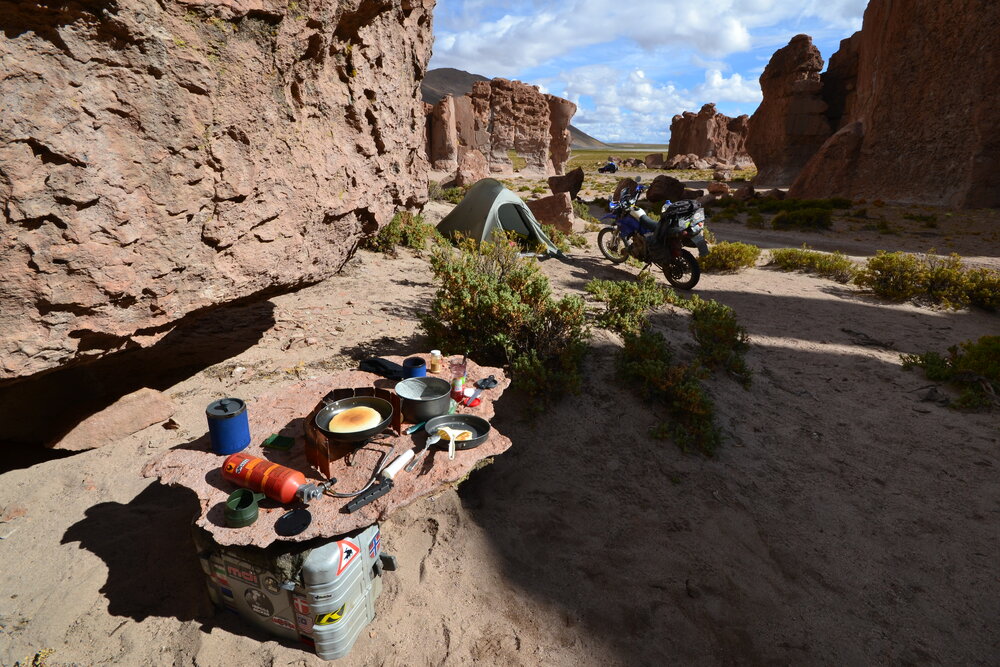
Also, we can’t overstate the value of training from a professional in terms of recovery gear and best practices. While you might think that you can “figure it out on your own” or that “I’ve seen this one on YouTube,” you could seriously damage your rig, yourself, and/or your travel companions if you don’t minimize the inherent risk in recovery and technical driving situations.
Plus, the overlanding community includes thousands of experienced travelers from every niche imaginable. Be sure to tap into their expertise online and at events where you can learn from the best.
Every Journey Starts with a Single Step
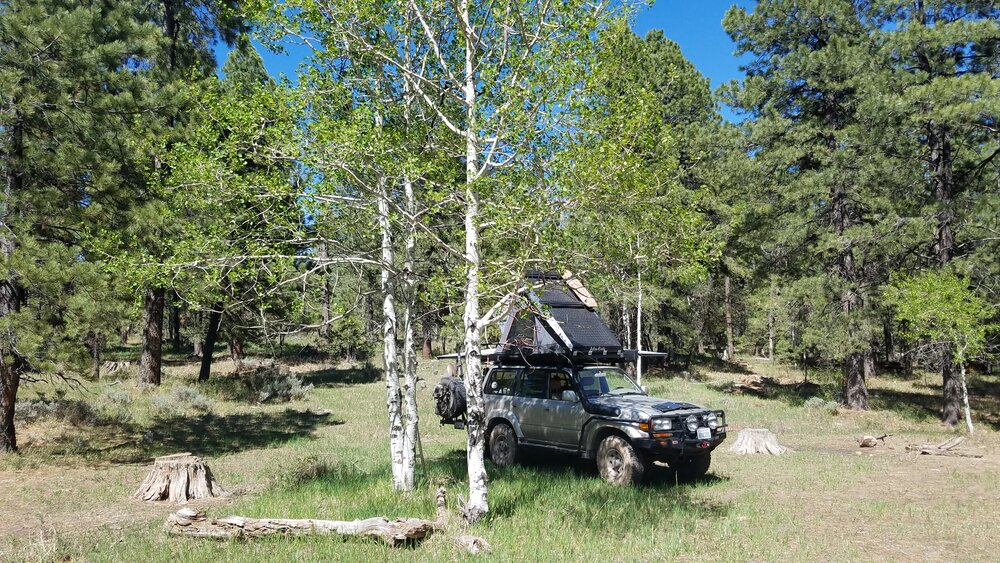
You don’t need to quit your job or embark on a decade-long journey to embrace overlanding. Set your sights on local public lands, equip yourself with practical skills, and stretch your travel limits to genuinely explore the unknown.
Ultimately, overlanding is about the experience and the environment around you. Don’t let a lack of fancy gear hold you back. While a grand global adventure may not be feasible now, countless destinations within a day’s drive are available. You can always work your way up to grander routes and far-flung destinations.
Remember, overlanding is all about the journey itself—every great adventure begins with that first step.
